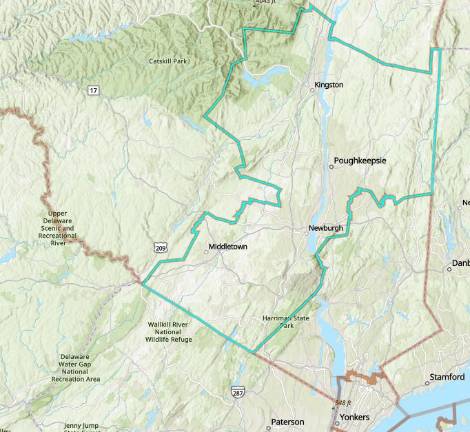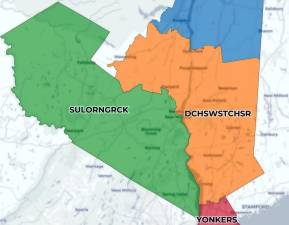NY redistricting panel approves new congressional map with modest changes

New York’s bipartisan redistricting commission approved a new congressional map on Feburary 15 that makes modest changes to three competitive districts but does not substantially alter the rest of the state’s lines.
The map proposal now moves to the Democrat-dominated Legislature, which can approve the plan or reject it and draw its own lines. It’s unclear exactly when lawmakers would meet to vote on the commission’s map.
New York’s congressional redistricting process has been closely watched this year because suburban races in the state could have an outsize influence on which party controls the House after the November elections.
The panel’s new map plan would likely help Democrats in two seats and the GOP in one, but it leaves most of the current congressional districts largely in place. The move could help head off the kind of legal challenges that upended Democrats’ attempts to dramatically redraw the districts for the 2022 but is also unlikely to deliver huge gains to the party.
The most major change appears to be in the central New York district currently held by Republican Rep. Brandon Williams. The commission would shift the district, which is situated over Syracuse, to include the left-leaning cities of Auburn and Cortland.
The other notable adjustments would be in the neighboring Hudson Valley districts held by Republican Rep. Marc Molinaro and Democrat Rep. Pat Ryan, with changes that would appear to help both incumbents.
The plan would stretch Ryan’s district north to include Woodstock and surrounding areas that lean Democrat. Molinaro’s district would expand to include Republican-leaning sections of the region.
“In a state where the Democrats control both the Legislature and the governor’s office, I think the Republicans got a pretty good deal out of it,” said New York Law School professor Jeffrey Wice, who focuses on redistricting.
The state’s Independent Redistricting Commission was supposed to draw the districts used in 2022 but failed to reach a consensus, kicking the process to state lawmakers.
Democrats who control the Legislature then drew their own map, which was intended to give Democrats an edge by stuffing Republicans into a few super districts to dilute GOP voting power across the state. A lawsuit eventually stopped the Democrats’ map from being used and a legal challenge delayed the congressional primaries.
The state’s highest court then appointed an outside expert to come up with a map for 2022. Republicans performed well under those congressional lines, flipping seats in the New York City suburbs and winning a narrow House majority.
After the defeats, Democrats sued to throw out the 2022 map. The case eventually reached the state’s high court, which in December ordered a new map to be drawn in a ruling that said the commission should have another chance to craft district lines.
This time around, the state’s redistricting commission was able to reach an agreement on a map proposal, approving a plan that looked much like the one drawn by the court’s expert in 2022. The panel approved the map plan by a vote of 9-1 during a brief hearing in Albany, with one of its leaders saying they used the existing map as a guide for the new proposal.
The proposal leaves congressional boundaries on Long Island, where races are expected to be hotly contested, mostly unchanged, including the district formerly held by George Santos, who was expelled from Congress, and won by Democrat Tom Suozzi in a special election. New York City’s lines also appeared largely unchanged.
“It was important for us not to enter into the process of confusing people out there over where they were going to vote,” said redistricting commission Vice Chair Charles Nesbitt.
Democratic leaders of the state Senate and Assembly said they were reviewing the map and did not immediately offer opinions on the proposal’s lines. Assembly Republican Minority Leader Will Barclay also said he was reviewing the map.
The Independent Redistricting Commission was created under a constitutional amendment approved by voters in 2014. The panel is made up of an equal number of Republicans and Democrats.
